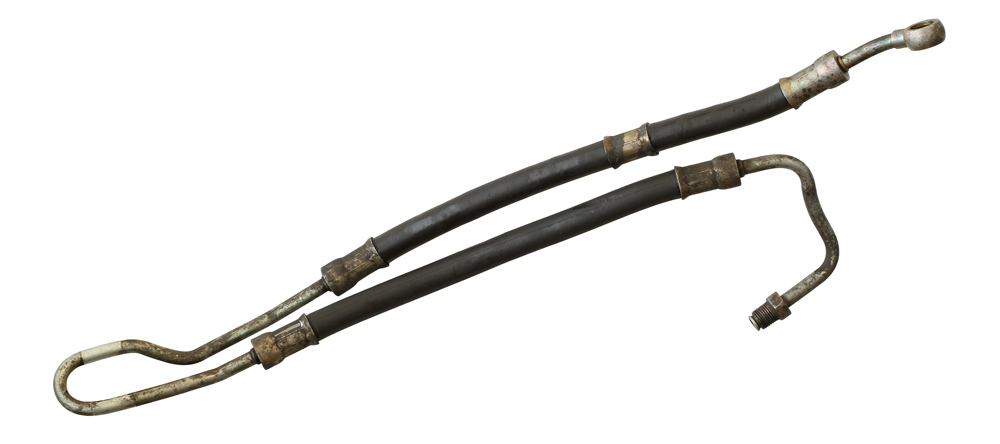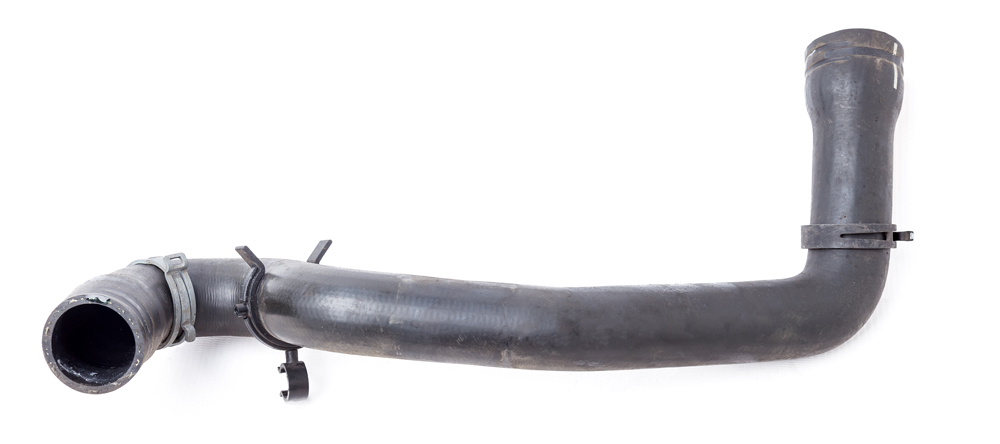Belts & Hoses
Belts & Hoses

It's Important to Keep Up Your Vehicle's Belts & Hoses
Keeping up the maintenance of your vehicle’s belts and hoses is just as important as maintaining your vehicle’s larger components. A damaged or broken belt or hose can cause serious damage to your car, truck, or SUV. At Rydell in Grand Forks, ND, we can help you with any issues that you may have with your vehicle’s belts and hoses. Preventative maintenance is important to keep your vehicle running at its best, and part of preventative maintenance is having regular inspections and replacing belts and hoses when needed.
Serpentine Belts
Engine accessories consist of the air conditioning compressor, water pump, alternator, radiator fans, power brakes, and power steering pump. The serpentine belt is sometimes also called the alternator belt, fan belt, or the accessory belt. This is because older vehicles had multiple belts to provide energy from the engine to the engine accessories. Most newer vehicles just have one serpentine belt.
If the serpentine belt becomes damaged or broken, your vehicle’s engine accessories will lose power. The engine accessories will start to slow down as they will no longer be able to continue spinning at the correct speed. The power to the electrical system will start to decrease until there is no power left. You will most likely first notice the loss of power steering, making it hard for you to turn the wheel of your vehicle. You will then most likely notice the electrical systems on your dash begin to go out as the alternator is no longer able to provide power to these systems. Without the alternator being able to provide power and recharge the battery, your headlights will start to dim until they stop working altogether and your vehicle’s battery will die. Another issue that may arise from a broken serpentine belt is your engine overheating. If the serpentine belt brakes, the water pump may no longer be able to circulate coolant through the cooling system, which is needed to keep your engine from overheating.
Industry standards say a serpentine belt should last 60,000 – 100,000 miles, but it is important to have it checked and replaced during your vehicle’s recommended scheduled maintenance. We recommend you check your owner’s manual for what specific recommendations are made for your vehicle’s specific make and model.
Timing Belt
The timing belt is located outside of the engine. It coordinates the movements of the camshaft and crankshaft. The crankshaft turns the camshaft, and the camshaft makes your engine’s valves open and close at the same time as your engine’s pistons. These valves let the air and gas in and out of your engine. The timing belt’s job is to make sure everything is operating at the correct time. If the camshaft’s and crankshaft’s movements do not coincide at the same time, your vehicle may experience damage to its valves, pistons, and engine. If your timing belt breaks your engine will stop working.
Your timing belt runs not only the timing of your engine but also most of the external components like your water pump and power steering. Timing belts don’t last forever, and if they break, engine damage will likely occur, and the vehicle will immediately quit. Industry standards dictate that they should be inspected at every service and should be replaced whenever they begin to show cracks. This usually occurs between four to six years and between 60,000 and 100,000 miles. We recommend you check your vehicle’s owner’s manual to find out what is recommended for your vehicle’s specific make and model.
Not all vehicles use a timing belt; instead, they have a timing chain. The timing chain is made from metal instead of rubber and is inside the engine rather than outside the engine. A timing chain will typically last longer than a timing belt but will eventually need to be replaced. The timing chain is maintained by the engine oil, so it is important to make sure your vehicle is having timely oil changes.
Hoses
Hoses can be thought of as the vehicle’s circulatory system. Your vehicle’s hoses move the different fluids throughout its different systems and components to ensure your vehicle is working the way it should be. Different makes and models will have different hoses, but most vehicles will have a fuel hose, radiator hose, power steering hose, and heater hose.

Power Steering Hose
The power steering hose transports the power steering fluid from the pump to the power steering system. There are two types of power steering hoses: high-pressure, and low-pressure. The high-pressure hose carries the power steering fluid from the pump to the power steering system. The low-pressure hose carries the power steering fluid from the power steering system back to the pump. Some signs that your power steering hose is going bad are leaking fluid, low power steering fluid levels, and difficulty steering and turning your wheel.

Fuel Hose
The fuel hose, also sometimes called the fuel lines, delivers the fuel from the gas tank to your engine. Over time a fuel hose can dry out and crack and may begin to leak. Signs that you may have a bad or failing fuel line are a gasoline odor in the vehicle, a fuel leak, and visible cracks on the exterior of the hose.

Heater Hose
The heater hose helps your vehicle’s heater work properly so you can stay warm on cold North Dakota days. Engine coolant flows through the heater hose from the engine to the heater core. Excess heat from the engine is transferred to the heater core in the engine coolant. Once the engine coolant reaches the heater core, it then flows through smaller hoses in the heater core. A fan then blows on these smaller hoses, and this warm air is what comes through your vehicle’s vents. The heater hose will then take the engine coolant back to the engine from the heater core.

Radiator Hose
The radiator hose is located in your vehicle’s cooling system. It administers the coolant from the water pump to the radiator, eliminates the excess heat that is in the coolant before it goes back to the engine, and it helps keep the engine from overheating.
There are two different types of radiator hoses: the upper radiator hose and the lower radiator hose. These hoses come in different shapes and lengths, and one cannot be substituted with the other.
The upper radiator hose is the pressure hose and is used to connect the top of the radiator to the top of the engine to carry the hot coolant fluid.
The lower radiator hose is the suction hose. It has a wire spring inside of it to stop the hose from crumpling or collapsing in on itself. This lower radiator hose is used to connect the bottom of the radiator to the water pump. The water pump is then used to pump the coolant through the system.
If one of these hoses develops a leak from either a crack or clamp failure, your vehicle will start to leak antifreeze and you now have the chance of your car or truck overheating.







